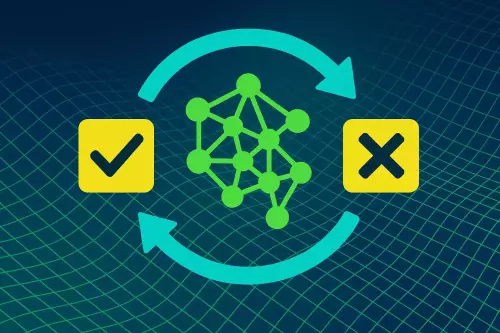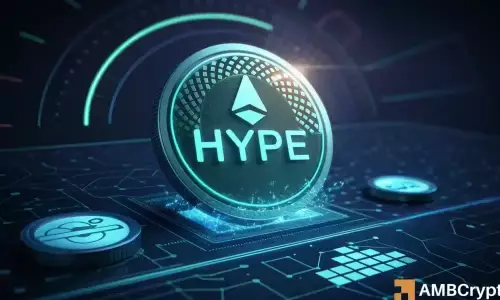 |
|
 |
|
 |
|
 |
|
 |
|
 |
|
 |
|
 |
|
 |
|
 |
|
 |
|
 |
|
 |
|
 |
|
 |
|
近年来,区块链生态系统经历了显着增长,比特币和以太坊等去中心化技术受到广泛关注。

The blockchain ecosystem has seen a significant surge in recent years, with decentralized technologies like Bitcoin and Ethereum gaining widespread attention. However, scalability remains one of the biggest hurdles for blockchain networks. As user demand increases, the ability of blockchains to handle large numbers of transactions without experiencing delays or excessive fees becomes a critical factor for adoption and usability. This is where Layer 2 solutions come into play, offering a transformative approach to improving the scalability and performance of blockchain networks.
近年来,区块链生态系统出现了显着增长,比特币和以太坊等去中心化技术受到广泛关注。然而,可扩展性仍然是区块链网络的最大障碍之一。随着用户需求的增加,区块链处理大量交易而不会出现延迟或过高费用的能力成为采用和可用性的关键因素。这就是第 2 层解决方案发挥作用的地方,它提供了一种变革性的方法来提高区块链网络的可扩展性和性能。
In this article, we will explore the surge in Layer 2 adoption, its key benefits, challenges, and the future of these scaling solutions. We will also look at how Layer 2 is helping to solve real-world problems and its implications for the blockchain industry moving forward.
在本文中,我们将探讨第 2 层采用的激增、其主要优势、挑战以及这些扩展解决方案的未来。我们还将研究 Layer 2 如何帮助解决现实世界的问题及其对区块链行业发展的影响。
Understanding Layer 1 vs Layer 2
了解第 1 层与第 2 层
To understand the role of Layer 2 in the blockchain ecosystem, it’s essential to first grasp the distinction between Layer 1 and Layer 2 solutions.
要了解第 2 层在区块链生态系统中的作用,必须首先了解第 1 层和第 2 层解决方案之间的区别。
Layer 1 solutions, also known as base layer protocols, form the foundation of the blockchain network. They handle the core functions of the blockchain, such as transaction processing, consensus mechanisms, and security. Examples of Layer 1 solutions include Bitcoin, Ethereum, Solana, and Avalanche.
第一层解决方案,也称为基础层协议,构成了区块链网络的基础。它们处理区块链的核心功能,例如交易处理、共识机制和安全性。第 1 层解决方案的示例包括比特币、以太坊、Solana 和 Avalanche。
Layer 2 solutions, on the other hand, are built on top of Layer 1 protocols to enhance their scalability, performance, or other aspects. They operate independently of the base layer but inherit its security and decentralization properties. Some common types of Layer 2 solutions include:
另一方面,第 2 层解决方案构建在第 1 层协议之上,以增强其可扩展性、性能或其他方面。它们独立于基础层运行,但继承了基础层的安全性和去中心化属性。一些常见类型的第 2 层解决方案包括:
Rollups: Rollups are a type of Layer 2 solution that executes transactions off-chain and generates a cryptographic proof, or "rollup," that is then submitted to the Layer 1 chain for final settlement. This allows for a batch of transactions to be processed off-chain, significantly increasing throughput and reducing costs. Optimistic Rollups and ZK-Rollups are two main categories of rollups.
Rollups:Rollups 是一种 Layer 2 解决方案,它在链外执行交易并生成加密证明或“rollup”,然后提交到 Layer 1 链进行最终结算。这允许一批交易在链下处理,显着提高吞吐量并降低成本。 Optimistic Rollups 和 ZK-Rollups 是 Rollup 的两个主要类别。
State Channels: State channels enable direct, off-chain transactions between two or more parties. They open a channel on the Layer 1 blockchain, deposit funds, and perform transactions off-chain. Once the transactions are complete, they close the channel and settle the final state on the Layer 1 chain. State channels are particularly useful for micropayments and gaming applications.
状态通道:状态通道支持两方或多方之间的直接链下交易。他们在第 1 层区块链上打开通道、存入资金并执行链下交易。一旦交易完成,他们就会关闭通道并在第 1 层链上确定最终状态。状态通道对于小额支付和游戏应用程序特别有用。
Sidechains: Sidechains are separate blockchains that run parallel to the main Layer 1 chain. They are connected to the main chain through a two-way peg, allowing for the transfer of assets and data between the two chains. Sidechains can operate with their own consensus mechanisms and rules, offering flexibility and scalability to the Layer 1 network.
侧链:侧链是与主第 1 层链并行运行的独立区块链。它们通过双向挂钩连接到主链,允许在两条链之间转移资产和数据。侧链可以按照自己的共识机制和规则运行,为第一层网络提供灵活性和可扩展性。
Examples of Layer 2 solutions include rollups, state channels, and sidechains, with Ethereum’s rollups, particularly Optimistic Rollups and ZK-Rollups, emerging as popular solutions.
第 2 层解决方案的示例包括 rollups、状态通道和侧链,其中以太坊的 rollups,特别是 Optimistic Rollups 和 ZK-Rollups,正在成为流行的解决方案。
The Surge in Layer 2 Adoption
Layer 2 采用率激增
The recent surge in Layer 2 adoption is not coincidental. Several factors have contributed to this increased interest and investment in Layer 2 technologies. Here are some of the key drivers:
最近第 2 层采用率的激增并非巧合。有几个因素导致人们对第 2 层技术的兴趣和投资增加。以下是一些关键驱动因素:
1. Scalability Challenges on Layer 1 Blockchains
1.第一层区块链的可扩展性挑战
The scalability problem has long been a pain point for blockchain networks, especially Ethereum. As blockchain adoption grows, the number of transactions processed on the network increases, leading to congestion and high gas fees. For instance, Ethereum’s transaction costs have soared at times of network congestion, pricing out smaller transactions and limiting its use for everyday applications.
可扩展性问题长期以来一直是区块链网络尤其是以太坊的痛点。随着区块链采用的增长,网络上处理的交易数量增加,导致拥堵和高昂的汽油费。例如,以太坊的交易成本在网络拥塞时飙升,导致较小的交易定价并限制其在日常应用中的使用。
Ethereum 2.0 aims to address some of these challenges with its shift from Proof of Work (PoW) to Proof of Stake (PoS) and sharding, but the network’s scalability will remain a challenge until these upgrades are fully implemented. In the meantime, Layer 2 solutions offer an immediate and effective way to reduce congestion on Layer 1 while improving the user experience.
以太坊 2.0 旨在通过从工作量证明 (PoW) 转向权益证明 (PoS) 和分片来解决其中一些挑战,但在这些升级完全实施之前,网络的可扩展性仍将是一个挑战。与此同时,第 2 层解决方案提供了一种立即有效的方法来减少第 1 层拥塞,同时改善用户体验。
2. Growing DeFi and NFT Ecosystems
2. 不断发展的 DeFi 和 NFT 生态系统
The rapid growth of decentralized finance (DeFi) and the explosive popularity of non-fungible tokens (NFTs) have placed additional pressure on blockchain networks. These applications require high transaction throughput and low latency to deliver seamless user experiences. Without Layer 2, many of these use cases would be hindered by slow transaction times and expensive fees on the main chain.
去中心化金融(DeFi)的快速增长和不可替代代币(NFT)的爆炸式流行给区块链网络带来了额外的压力。这些应用程序需要高交易吞吐量和低延迟才能提供无缝的用户体验。如果没有第 2 层,许多用例将因主链上缓慢的交易时间和昂贵的费用而受到阻碍。
Layer 2 solutions are essential to enable the scaling required for DeFi protocols, NFT marketplaces, and other blockchain-based applications. For example, platforms like Uniswap and SushiSwap are integrating Layer 2 solutions to allow for faster trades and lower fees. Similarly, NFT platforms like OpenSea and Rarible are increasingly adopting Layer 2 solutions to improve the user experience by reducing gas fees and transaction times.
Layer 2 解决方案对于实现 DeFi 协议、NFT 市场和其他基于区块链的应用程序所需的扩展至关重要。例如,Uniswap 和 SushiSwap 等平台正在集成第 2 层解决方案,以实现更快的交易和更低的费用。同样,OpenSea 和 Rarible 等 NFT 平台也越来越多地采用 Layer 2 解决方案,通过减少 Gas 费用和交易时间来改善用户体验。
3. Innovation in Rollups
3、Rollups的创新
Rollups are one of the most promising Layer 2 solutions, and their adoption has seen a sharp rise in recent months. Rollups operate by executing transactions off-chain while maintaining the security of the Layer 1 chain. There are two primary types of rollups:
Rollups 是最有前途的 Layer 2 解决方案之一,近几个月来其采用率急剧上升。 Rollups 通过在链外执行交易来运行,同时维护第 1 层链的安全性。汇总有两种主要类型:
Optimistic Rollups: Optimistic Rollups assume that all transactions are valid by default and
乐观汇总:乐观汇总假设所有交易默认都是有效的,并且
免责声明:info@kdj.com
所提供的信息并非交易建议。根据本文提供的信息进行的任何投资,kdj.com不承担任何责任。加密货币具有高波动性,强烈建议您深入研究后,谨慎投资!
如您认为本网站上使用的内容侵犯了您的版权,请立即联系我们(info@kdj.com),我们将及时删除。
-

-

- 比特币财政部:泡沫还是突破?
- 2025-10-19 16:00:00
- 像 MicroStrategy 这样的比特币财务公司是明智的投资,还是一个等待破裂的泡沫?深入研究这些加密货币控股公司的估值和未来前景。
-

- Floki 价格检查:超卖?布林线讲故事!
- 2025-10-19 15:58:40
- Floki 准备好反弹了吗?我们深入研究图表,检查超卖情况和布林带,看看 Floki 价格的下一步走势。
-

-

- 应对加密货币动荡:INJ、布林带和市场整合
- 2025-10-19 15:58:39
- 随着加密货币市场整合,INJ 测试较低的布林带支撑。反弹即将来临,还是空头会继续控制?让我们深入探讨技术细节。
-

-

- CRV 测试、技术指标、潜在逆转:下一步是什么?
- 2025-10-19 15:58:37
- 深入了解最新的 CRV 分析。发现关键支撑位、技术指标和潜在逆转情景。在动荡的加密货币市场中保持领先!
-

-




















![[4K 60fps] oc3andark 的 Astral(1 币) [4K 60fps] oc3andark 的 Astral(1 币)](/uploads/2025/10/19/cryptocurrencies-news/videos/k-fps-astral-ocandark-coin/68f438453fa33_image_500_375.webp)










































